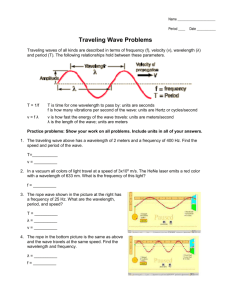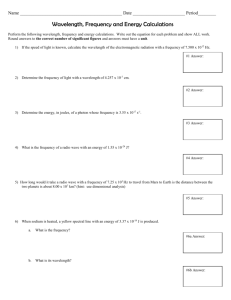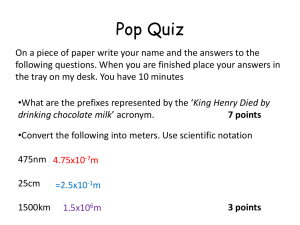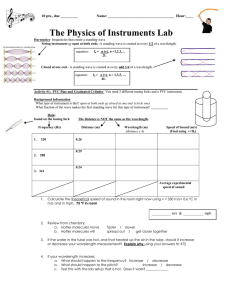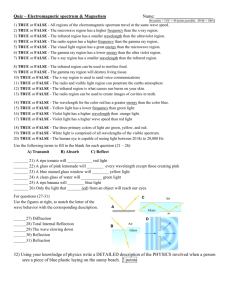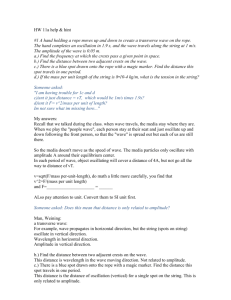Ch-15 Questions: Q4: This is an example of transverse wave since
advertisement
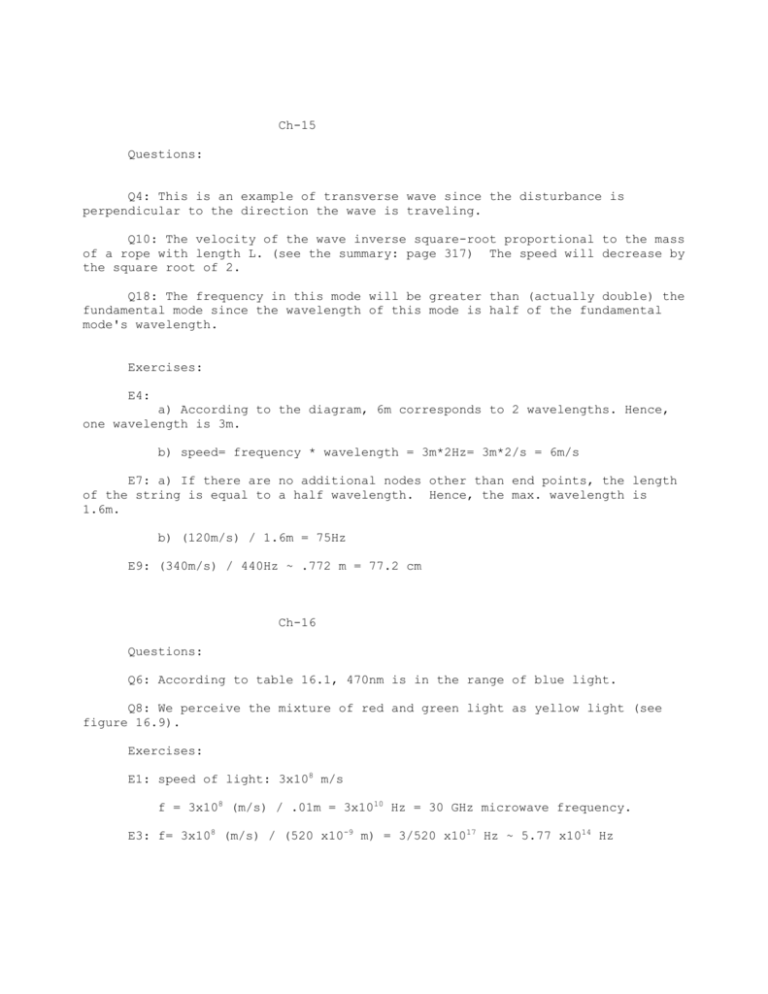
Ch-15 Questions: Q4: This is an example of transverse wave since the disturbance is perpendicular to the direction the wave is traveling. Q10: The velocity of the wave inverse square-root proportional to the mass of a rope with length L. (see the summary: page 317) The speed will decrease by the square root of 2. Q18: The frequency in this mode will be greater than (actually double) the fundamental mode since the wavelength of this mode is half of the fundamental mode's wavelength. Exercises: E4: a) According to the diagram, 6m corresponds to 2 wavelengths. Hence, one wavelength is 3m. b) speed= frequency * wavelength = 3m*2Hz= 3m*2/s = 6m/s E7: a) If there are no additional nodes other than end points, the length of the string is equal to a half wavelength. Hence, the max. wavelength is 1.6m. b) (120m/s) / 1.6m = 75Hz E9: (340m/s) / 440Hz ~ .772 m = 77.2 cm Ch-16 Questions: Q6: According to table 16.1, 470nm is in the range of blue light. Q8: We perceive the mixture of red and green light as yellow light (see figure 16.9). Exercises: E1: speed of light: 3x108 m/s f = 3x108 (m/s) / .01m = 3x1010 Hz = 30 GHz microwave frequency. E3: f= 3x108 (m/s) / (520 x10-9 m) = 3/520 x1017 Hz ~ 5.77 x1014 Hz





